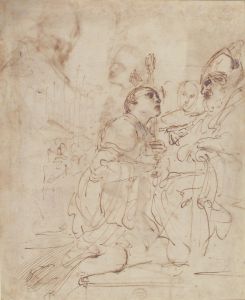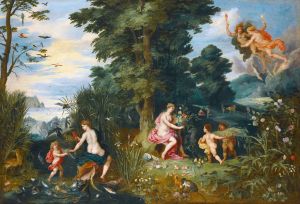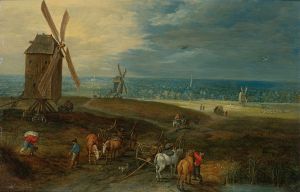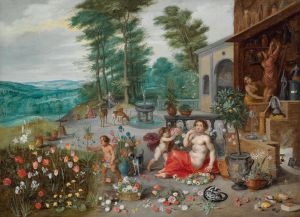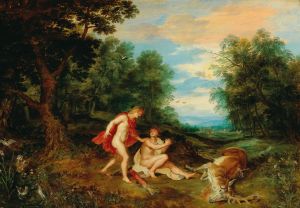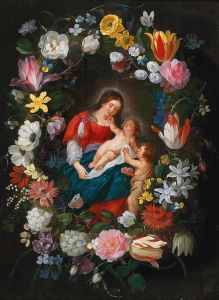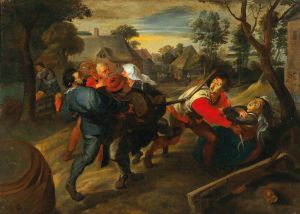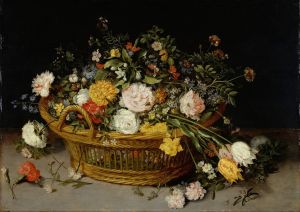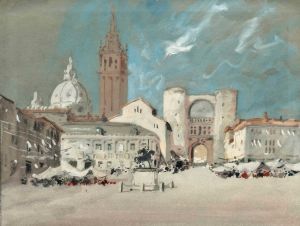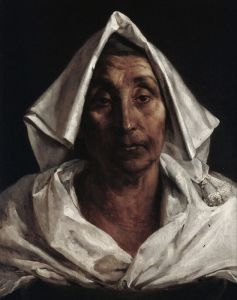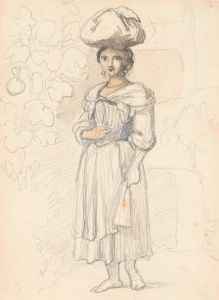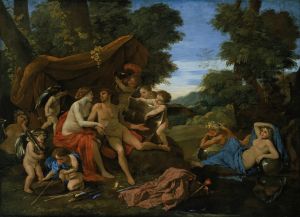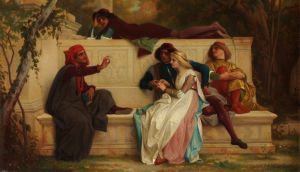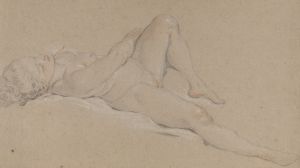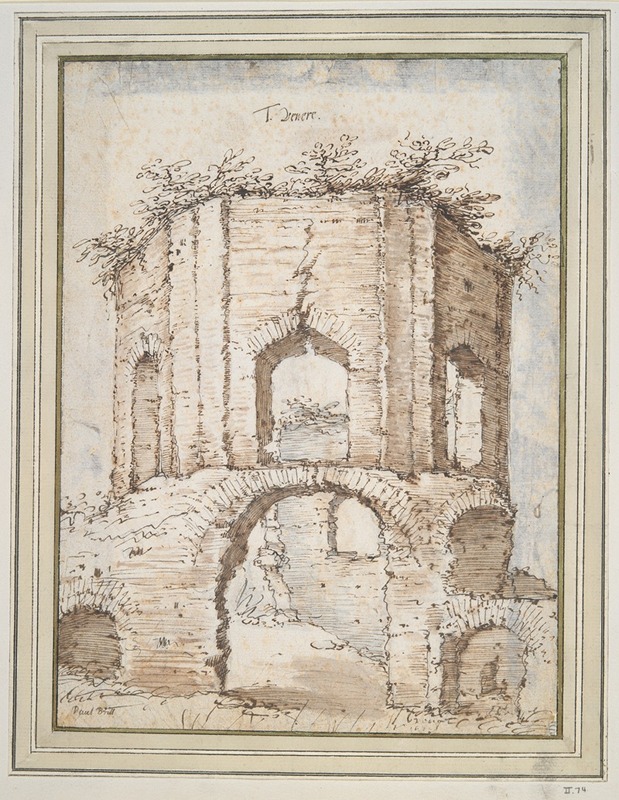
Temple of Venus at Baiae
A hand-painted replica of Jan Brueghel the Younger’s masterpiece Temple of Venus at Baiae, meticulously crafted by professional artists to capture the true essence of the original. Each piece is created with museum-quality canvas and rare mineral pigments, carefully painted by experienced artists with delicate brushstrokes and rich, layered colors to perfectly recreate the texture of the original artwork. Unlike machine-printed reproductions, this hand-painted version brings the painting to life, infused with the artist’s emotions and skill in every stroke. Whether for personal collection or home decoration, it instantly elevates the artistic atmosphere of any space.
The "Temple of Venus at Baiae" is a painting by Jan Brueghel the Younger, a Flemish Baroque painter known for his detailed landscapes, allegorical scenes, and vivid use of color. Jan Brueghel the Younger was born in 1601 in Antwerp, the son of Jan Brueghel the Elder and the grandson of Pieter Bruegel the Elder, both of whom were also renowned painters. He inherited his father's workshop and continued the family tradition of painting intricate and elaborate scenes.
The painting depicts the ruins of the Temple of Venus at Baiae, an ancient Roman seaside resort located in the Bay of Naples, Italy. Baiae was famous in antiquity for its luxurious villas and thermal baths, frequented by the Roman elite. The temple itself was dedicated to Venus, the Roman goddess of love, beauty, and fertility. Although the exact date of the painting is not specified, it is likely to have been created in the early to mid-17th century, during Brueghel's active period.
In the painting, Brueghel captures the grandeur and decay of the ancient temple, set against a picturesque landscape. The ruins are rendered with meticulous attention to detail, showcasing the artist's skill in depicting architectural elements and textures. The scene is populated with figures, possibly tourists or locals, who add a sense of scale and liveliness to the composition. The inclusion of these figures also reflects the Baroque interest in combining human activity with natural and architectural beauty.
Brueghel's use of color is notable in this work, with a harmonious palette that enhances the serene and nostalgic atmosphere of the scene. The sky is painted in soft blues and whites, suggesting a clear, sunny day, while the vegetation and ruins are depicted in earthy tones that convey the passage of time and the blending of nature with human-made structures.
The painting exemplifies Brueghel's ability to blend realism with idealism, creating a romanticized vision of the past that was popular among his contemporaries. His work often included elements of fantasy and allegory, and while "Temple of Venus at Baiae" is grounded in a real location, it also evokes a sense of timeless beauty and the enduring legacy of classical antiquity.
Jan Brueghel the Younger continued to produce paintings until his death in 1678. His works were highly sought after during his lifetime and remain valued by collectors and art historians today. The "Temple of Venus at Baiae" is a testament to his artistic talent and his ability to capture the essence of historical and mythological subjects with precision and imagination.
Overall, the painting is a fine example of Flemish Baroque art, reflecting the cultural and artistic interests of the period, as well as Brueghel's personal style and technical prowess.





